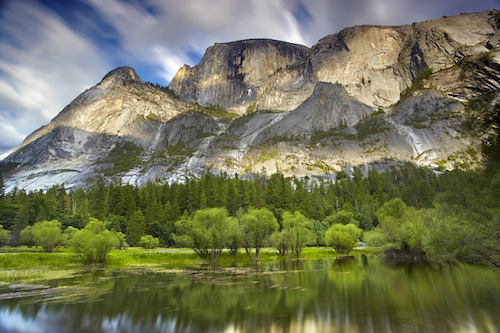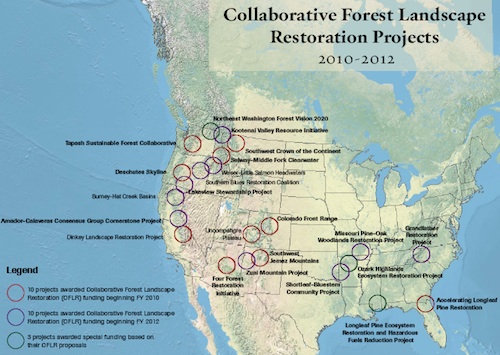
The following post is written by Jon Schwedler, communications manager for The Nature Conservancy’s Restoring America’s Forests program. For the past 14 years, Jon has worked on forest conservation efforts in Maryland, Virginia, Montana, New Mexico and California.
America’s forests are getting some love this Valentine’s Day.
This good news came in the form of two gifts wrapped in one announcement from the U.S. Forest Service last week. With 193 million acres, the Forest Service is the single largest manager of forested lands in the U.S., which roughly translates to them overseeing about 1 in 5 of our country’s trees.
The first gift is that the Forest Service said it will be increasing the pace of forest restoration by at least 20% over the next 3 years. That means in 2014 they will look to restore 4.4 million acres — an area a little bit less than Yellowstone, Yosemite, and Grand Canyon National Parks put together. Not bad, eh?
The second morsel was extra love shared with 14 states, in the form of new local investments in the Collaborative Forest Landscape Restoration Program (CFLR). This relatively new program, created in 2009, brings together folks who used to be at loggerheads over the management of our forests — industry, environmentalists, recreationists, sportsmen — to improve the health of our forests for people, water, and wildlife.
One of the forest health issues that the CFLR program is addressing is wildfire danger. Pioneering conservationist John Muir once said he could ride a horse at full gallop through the widely spaced trees of his beloved Sierra Mountains. Today in many of those same places you couldn’t even crawl through the forest. Why?
Because in some areas of the country one hundred years’ worth of putting out all natural fires has allowed our forests to become jam-packed like canned sardines — they’re now choked with thickets of small diameter trees instead of stocked with well-spaced, healthy trees that can survive natural, low intensity wildfires.
Just as being packed in tiny areas is bad for people’s health, this pickled forest condition also makes these forests less healthy, and less able to provide the live-giving services we rely on. For example, America’s forests store and filter half of our nation’s water supply. They also provide jobs to more than a million wood products workers.
Unnaturally dense forests also have a dangerous side — they can fuel huge, dangerous, costly mega-fires that burn too hot and too fast, like the ones we saw last year in the Southwest.
So while not exactly a box of chocolates, the Forest Service’s announcement last week to increase the pace of forest restoration was a welcome gift. We are blushing green.
The map below shows the new full list of CFLR projects, plus the three bonus projects (projects with involvement from The Nature Conservancy are in bold). Can you feel the love?
[Click to download a larger map]

[Top image: Mirror Lake in Yosemite Valley in California. Image source: Patrick Smith.]